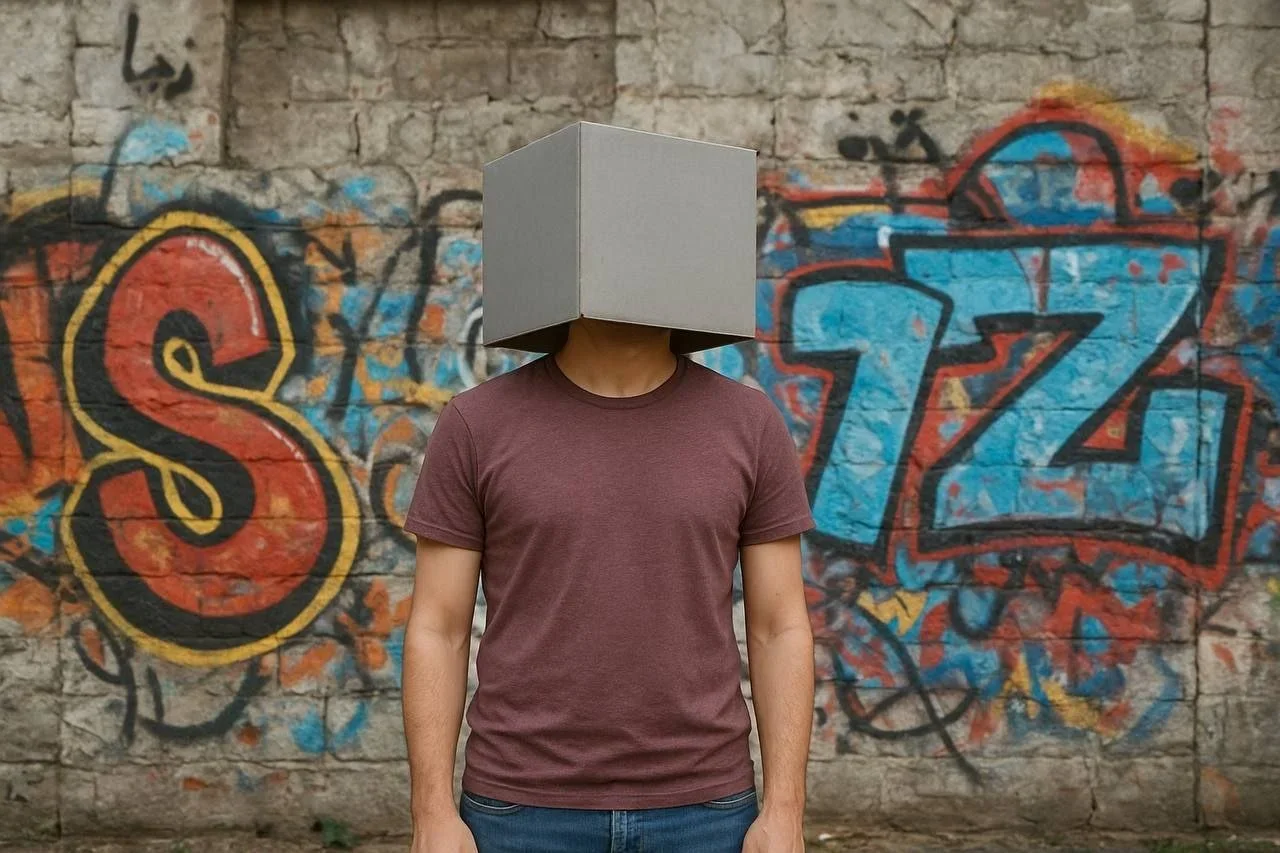10 Questions with Kate Ferguson
Al-Tiba9 Art Magazine ISSUE19 | Featured Artist
Kate Ferguson (USA) is a photographer, writer, and filmmaker based in Mexico City. Her photography and film works have been showcased across Greece, Mexico, the USA, Romania, Uruguay, Russia, Canada, England, and Germany. She was awarded Best Imagination at the Short Film Factory in Bucharest and for Lyrical Composition at Magikal Charm, NYC. Her recent residencies include Bonfire Air, Nekubi in Kavala, Greece, and Studio Luce in El Paredón, Guatemala.
Kate Ferguson - Portrait
ARTIST STATEMENT
Kate Ferguson's multidisciplinary practice is rooted in an appreciation for the threshold moments where transformation occurs and realities blur. The spiritual and mystical play a large influence, as both a topic of observation and a way of being. Through her work, she considers nostalgic liminality, the sensation of memory, and decisions that lead to psychological and spiritual evolution, particularly in regard to self-actualisation. Storytelling is central to all areas of her work. In photography, Kate gravitates toward raw, energetic compositions and vibrant colour saturation. She often uses vintage film cameras and experimental processes like film soup, which alters the film during development and introduces an element of unpredictability. Her approach is hands-on, intuitive, and led by curiosity. In her writing, whether through non-fiction narrative texts or film scripts, she focuses on emotional and psychological evolution, especially the small decisions or encounters that quietly shape the direction of a life. Her stories often centre on personal reflection and interpersonal dynamics. Filmmaking allows her to explore subconscious layers beyond what still photos expose. Through moving image, she investigates internal landscapes and complex emotional states, adding depth and nuance to the themes that run through her work.
Robbed, Photography, 35mm film/Film soup, 2024 © Kate Ferguson
Model Rob Klassen shot in Los Angeles, CA
AL-TIBA9 ART MAGAZINE ISSUE19
Get your limited edition copy now
INTERVIEW
Please introduce yourself to our readers. Who are you, and when did you first realise art could be your career?
I’m Kate Ferguson, a photographer, writer, and filmmaker currently based in Mexico City. I grew up in California, moving often. Making art has always been so much of my natural state. I did go through an era where I was perceivingsome mixed messages about the logistical practicalities of art as a career. I got a “traditional” degree and have worked in so many different jobs. But I was also encouraged by teachers and by my family to continue exploring it, and would say that’s only increased over time. I have always felt strongly about honouring the creative impulses, and I’d say my dedication has also grown over time. I try to trust myself.
Your work spans photography, writing, and filmmaking. How did your creative journey begin, and what led you to embrace such a multidisciplinary practice?
These are the ways I played as a child, and I never totally stopped. I took photos of my dolls, which, as you might imagine, are a bit haunting. I made stop motion short films featuring my toys and live action short films starring my friends. People started giving me cameras, and I got pretty into photography and art in high school. When I was in college, I did a study abroad program in Paris, which is when I started to take things a bit more seriously. Filmmaking came quite a bit later. I would say I had more work to do to grow into that, both technically and just as a person. I’ve continued with each of these disciplines because, for me, they all inform each other. It’s all storytelling, and these are allways that I like to communicate.
Robbed, Photography, 35mm film/Film soup, 2024 © Kate Ferguson
Robbed, Photography, 35mm film/Film soup, 2024 © Kate Ferguson
You describe your art as rooted in “threshold moments” where transformation occurs. Can you share a personal experience that first made you aware of these liminal spaces?
When I was growing up, I was very into a 70’s movie called The Adventures of the Wilderness Family. There’s a scene where the family leaves Los Angeles to move into a forest cabin, and the dad yells, “We’re getting out of here!” as they drive down the freeway. It is quite literally a point of transition for the characters and the story, and I felt it in such an extreme manner that I wanted to learn how to replicate it. I can feel it now, talking about it. It’s a type of buoyant liminality. It’s the movement in the in between. Embracing the inevitability that everything will change. I like the sweetness of nostalgia and the romance of adventure; those threshold moments contain both. So some of my firstmemories of liminal spaces were actually brought about by art.
In your photography, you often work with vintage film cameras and techniques like film soup, which introduce an element of unpredictability. What draws you to this experimental approach, and how do you balance chance with control in your process?
I learned photography on film cameras and processing in darkrooms, so for one thing that feels most familiar to me. While there is a predictable cause and effect, it’s also easy to witness the mysterious magic of it all when working with film, and that’s an important part of the artistic process for me. I tend to feel that the art itself knows as much as I do (if not more) and that we’re working together. So I really go into projects with a lot of curiosity and trust.
The control I bring into it is the experience. Having preferred film stocks, lighting, and knowing how certain cameras tend to behave. In the case of film soup, knowing which ingredients create gentle colour shifts and which ones are more likely to completely obliterate a strip of film. That being said, I don’t really feel like there are mistakes. I love texture, grain, and colour. Can’t get enough. If I develop some film and there are surprises to contend with, then it inspires me to get creative in doing it. I appreciate the chance; it keeps things fresh, and it can feel really synchronistic and purposeful.
© Kate Ferguson
Nostalgia, memory, and psychological and spiritual evolution are recurring themes for you. What kind of dialogue do you hope your work sparks with viewers on these subjects?
I’ve connected very strongly with the concept of evolution, and particularly through trusting some sort of divine design or higher power. And a lot of evolution means a lot of change. I think I became cognizant of the concept of impermanence pretty early on, which could lean towards existential confusion, but it’s also where all the possibilities are. No two days are the same; I am never quite the same. There’s all this potential to alchemise and release and heal and become.
It’s such a gift to have options in the way we perceive things. I still feel fondly about places I no longer live, and sweetly about people I no longer have relationships with. Experience is just very worthy, and we have a humongous, glorious planet to do it on. Life is really beautiful, and I hope my work speaks to that.
Your short film, Dear Kevin, brought you to Mexico City and eventually inspired you to settle there. What is it about the city’s energy and culture that feels essential to your work today?
That’s true! I had lived in Los Angeles for many years and felt ready for a change. I was thinking I would become nomadic for a while and just travel the world, but when I got to Mexico City, I found that it was something I needed to lean into. I’ve found a really pure appreciation for art, beautiful architecture, and a walkable lifestyle. There’s a lot to learn and witness, which is a way of living that I value. I’m learning Spanish and am grateful for the challenge and being immersed while doing it. I think that, in general, learning about different cultures, histories, and languages is essential to my work, and also just essential as a person. I feel best when I’m constantly evolving, and I trust that my work will as well. I think there are likely various location chapters ahead of me.
Your recent residencies have taken you from Greece to Guatemala. How do different locations and cultures influence your creative process and the themes you explore?
Place is really influential to my work. Changing locations is a fast way to shake everything up. There are so many elements to this, from witnessing cultures to witnessing my thoughts and feelings within them. Even just travelling across the world and watching the sun set at different times of the evening is totally mind-boggling to me. These things we take for granted can actually completely influence our lifestyle and the way we feel in a day. I’ve also gotten curious about astrocartography (astrology related to locations). The more I expand my worldview, the more curious I become.
Across those two residencies, I started to notice some patterns emerging in my photography work and in the way I observe people. In both Greece and Guatemala, I spent a lot of time in, on, or near the water, observing the universal ways in which people gather in, on, or near the water. As interested as I am in the uniqueness of different places, I’m also interested in our similarities across time and space.
© Kate Ferguson
© Kate Ferguson
Your work has also been exhibited across many countries. Have you noticed differences in how audiences from different cultural backgrounds respond to your themes and imagery?
I think I’m more so finding similarities. When I made my short film Dear Kevin, I wasn’t sure that it would resonate with anyone at all (which I was fine with), when in fact it has resonated the most out of the short films I’ve made thus far.There are themes of letting go and becoming, which we’re all familiar with in one way or another. I think the same is true with my photography. I’m sure there are nuances, but I think a lot of my photos are experienced as feelings first before whatever the subject is. At least that’s the way it feels to make them, and what I’ve witnessed in how people observe them thus far.
Looking ahead, what upcoming projects or creative directions are you most excited about? And how do they continue the artistic path you’ve been on so far?
I have just recently finished a few film projects that have been in process for quite a long time. I’m excited to complete them, and I’m excited to make some space to welcome in what’s next. I shot a lot of photos this summer, I’m feeling rich in photos. I’d love to explore new ways to share them, like perhaps publishing a photo book.
And lastly, where do you see yourself next, both professionally and personally? What do you hope the future holds for you?
Personally, there are a lot of destinations I have yet to visit and people I still need to meet. I hope the best is yet to come. Professionally, I feel like I’m just getting started. I hope to make a lot of beautiful things and share a lot of stories. As long as I’m exploring, learning, and growing, that sounds pretty good to me.
Artist’s Talk
Al-Tiba9 Interviews is a curated promotional platform that offers artists the opportunity to articulate their vision and engage with our diverse international readership through insightful, published dialogues. Conducted by Mohamed Benhadj, founder and curator of Al-Tiba9, these interviews spotlight the artists’ creative journeys and introduce their work to the global contemporary art scene.
Through our extensive network of museums, galleries, art professionals, collectors, and art enthusiasts worldwide, Al-Tiba9 Interviews provides a meaningful stage for artists to expand their reach and strengthen their presence in the international art discourse.
























